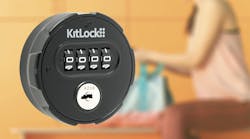The past two years have witnessed amazing progress in the development of standards for the physical security industry. Because of PSIA’s open and collaborative environment with equal participation from manufacturers, our specifications and adoption are moving forward faster than ever.
With the release of the Area Control v1.0 specification—a comprehensive integration standard for access control and intrusion detection systems to communicate with each other, as well as with other security systems—any system that supports this specification can share information and interoperate.
A number of large manufacturers—Honeywell, UTC, Tyco, Mercury Security and Lenel—and integrators ADT and Stanley Security Solutions, were involved in creating and defining this specification. PSIA now has full grown specifications in the areas of access control, intrusion detection, IP cameras, video analytics and recording and content management (RaCM) covering digital video recorders (DVRs), network video recorders (NVRs) and video management systems (VMS). This fourth specification completes our original objective of solving true interoperability problems by allowing customers to deploy the security systems that best meet their organization’s requirements while eliminating concerns about system communication.
In the now and the know
Now that PSIA has delivered its main system specification with support for five major areas of security, our 2012 focus is to educate end-user customers that PSIA standards are not limited to connectivity but provide significant system interoperability benefits. While PSIA has laid its foundation for systems standards, we strongly believe it will be customers who will drive any standard into adoption. Customers are most interested in our ability to eliminate custom coding and reduce costs for system integration while manufacturers have adopted PSIA standards to showcase business value to their customers. Platforms with a systems approach are the key ingredients here.
The PSIA Area Control specification was delivered in time to meet the upcoming 2012 growth of access control and intrusion detection systems. Leaders in the physical security industry—including Honeywell, Tyco, UTC, and Inovonics—implemented this specification into products and platforms for release in 2012. Given the active PSIA participation by ASSA ABLOY, Stanley Security Solutions and several other strong players, we expect this specification will soon become the industry standard.
Video storage will also be an area of growth in 2012 as it’s quickly becoming a critical component within many security environments. The PSIA Recording and Content management (RaCM) specification offers the ability to easily integrate different types of DVR, NVR, and VMS systems with information from other physical security systems. After the completion of the RaCM specification, PSIA developed testing tools which are available to support the many companies that plan to adopt this standard within the next six months.
PSIA specifications are important to any market segment but those that have experienced quick adoption of new technologies along with consolidation and merger/acquisition activities could see faster benefits from interoperable systems. Such segments will include banking and finance; large corporate facilities; and transportation.
Final thoughts
PSIA standards offer significant benefits for both large and small organizations. The advantages for a large, complex environment are more obvious as there are typically many individual systems that need to interoperate with large, scalable enterprise security systems. However, these same benefits could apply to smaller, more localized operations that also require interoperability.
The development challenges have been met. Now, it’s time for the real customer feedback to begin. While we will continue to enhance, refine, and extend our specifications in 2012, we look forward to hearing the “voice of the customer” and demonstrating for them the power of system interoperability.




